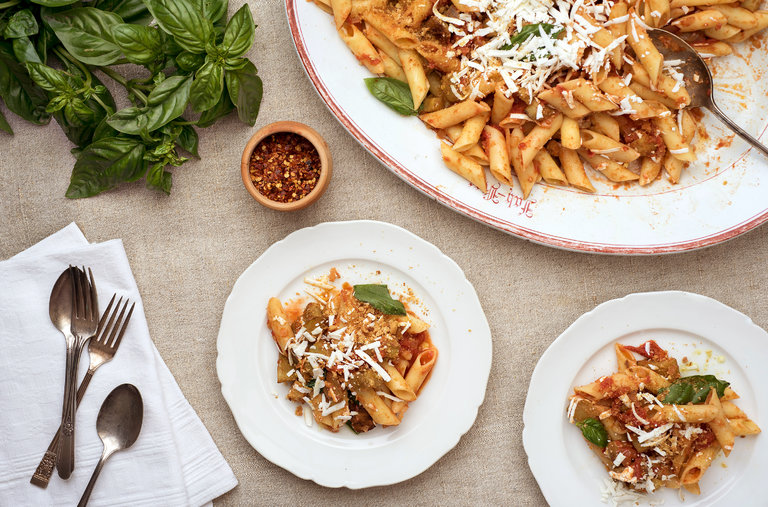Sicily, the ancient Mediterranean island kingdom that’s now part of Italy, is a fascinating place to visit. Hints of Sicily’s past are everywhere, in the architecture, in the church interiors and in the archaeological remains. But even an earnest history-seeking traveler gets hungry. My suggestion is to head to the streets.
Palermo, the capital, is a street-food paradise, with vendors selling traditional items, like panelle (chickpea fritters) and arancini, stuffed risotto balls as big as oranges. For the adventurous, there’s pani câ meusa, a warm sandwich of beef spleen on a bun, which is much better than it sounds.
But a street food with universal appeal is sfincione, a hearty, tomatoey pizza. It is baked in a rimmed sheet pan, which allows the dough to rise to a chewy thickness.

Tomato sauce, bread crumbs, pecorino (or another sheep’s cheese) and anchovy give the topping its flavors.CreditJulia Gartland for The New York Times. Food Stylist: Monica Pierini.
Sfincione may have regional variations across Sicily, but the basic concept is the same: dough topped with cheap, tasty ingredients, for a filling treat that can emerge from even the most humble home kitchen. (Now, though, most people buy a slice from a street cart or bakery.)
Sfincione is not a cheesy pizza. It’s usually made with only a small amount of sharp-flavored sheep’s milk cheese, just enough to complement the other savory toppings. In this way, sfincione differs from what Americans know as a “Sicilian slice,” which, though also cut thick and square, can come loaded with cheese or other items.
My favorite version is one I learned from Fabrizia Lanza. The proprietor of the Anna Tasca Lanza Cooking School, on the family’s country estate near Palermo, Ms. Lanza is passionate about preserving Sicily’s traditional cuisine. As she notes in her 2012 cookbook, “Coming Home to Sicily,” making sfincione at home using high-quality extra-virgin olive oil gives you an even better version of what you buy in the street.
I adhere closely to the original delicious recipe, with a couple of minor changes. Instead of blanching the onions, as she does, I sauté them in the skillet while preparing the sauce, and I also increased the amount of tomato and anchovies slightly, a cook’s prerogative.
In her recipe, the bread crumbs are stirred into the topping, but some cooks prefer to sprinkle them on after saucing the dough. The choice is yours. As for cheeses, consider caciocavallo or provolone, coarsely grated. But you’ll also get good result with more widely available pecorino Romano.
As the sfincione bakes, your kitchen will fill with tantalizing aromas. Inhale deeply and dream of Sicily. I’m told sfincione is popular there for Christmas Eve and New Year’s celebrations. In my view, it’s an any-time-of-year delight.






